UPSC Daily Current Affairs: 18th January 2025 | Current Affairs & Hindu Analysis: Daily, Weekly & Monthly PDF Download
GS2/Polity
Fast Track Immigration Trusted Traveller Program (FTI-TTP)
Source: Times of India
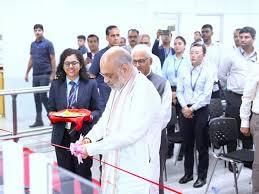 Why in News?
Why in News?The Fast Track Immigration – Trusted Traveller Program (FTI-TTP) is expanding to seven major Indian airports starting January 16, 2025. This initiative aims to ensure a seamless and expedited immigration process for Indian nationals and Overseas Citizen of India (OCI) cardholders.
- The FTI-TTP was launched as part of the 'Viksit Bharat @2047' vision.
- The Bureau of Immigration under the Ministry of Home Affairs is responsible for implementing the program.
- The program aims to enhance international mobility and establish world-class immigration facilities.
Additional Details
- Program Implementation: The FTI-TTP was initially introduced on June 22, 2024, at Delhi’s Indira Gandhi International Airport (IGI). In its first phase, the program is targeted at OCI cardholders and will eventually extend to foreign travelers.
- Phased Approach: - **Phase 1:** Covers Indian citizens and OCI cardholders.
- **Phase 2:** Will extend to foreign travelers.
The program is free of cost during the initial implementation phase, with plans to be operational at 21 major airports across India by the end of the rollout. - Key Features: - Operates through e-gates for faster processing.
- Travelers complete the process by scanning their boarding pass and passport, followed by biometric authentication.
- Enrollment is done via an online portal (ftittp.mha.gov.in), where applicants upload necessary documents.
- Membership is valid for a maximum of 5 years or until the passport’s validity, whichever comes first. - Significance: - Reduces immigration clearance time, providing a hassle-free travel experience for international travelers.
- Biometric authentication enhances identity verification and reduces the risk of fraudulent entries.
- Travelers can bypass regular queues, making the immigration process more convenient and seamless.
- The program is comparable to the Global Entry Program in the United States, aligning India's immigration services with international standards.
This initiative marks a significant step in modernizing India's immigration process, aiming to facilitate smoother travel for citizens and OCI cardholders while enhancing security measures.
GS1/Geography
Bharathapuzha River
Source: New Indian Express
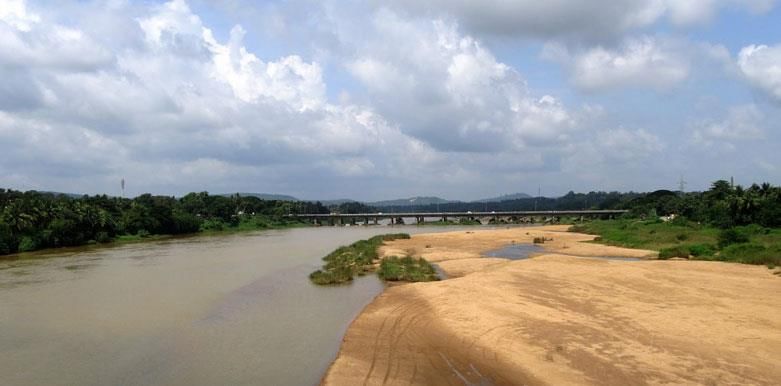 Why in News?
Why in News?Recently, a tragic incident occurred where a family of four drowned in the Bharathapuzha River, highlighting the dangers associated with this water body.
- The Bharathapuzha River is the second longest river in Kerala, following the Periyar River.
- It has a total length of approximately 209 km.
- The river is also referred to by names such as Nila, Kuttipuram Puzha, and Ponnaniyar.
Additional Details
- Origin: The Bharathapuzha originates from the Anaimalai hills in the Western Ghats region of Tamil Nadu.
- Course:
- The river flows northwesterly through Pollachi taluk in Coimbatore district, Tamil Nadu.
- It enters Kerala through the Palghat gap and ultimately discharges into the Arabian Sea near Ponnani town, Kerala.
- Drainage Area: Out of the total drainage area of approximately 6186 sq.km, around two-thirds (4400 sq.km) is situated in Kerala, while the remaining 1786 sq.km is in Tamil Nadu.
- Rainfall: The Bharathapuzha basin receives significant rainfall during the southwest monsoon and is located in the rain shed region of the Western Ghats.
- Major Tributaries: The river has several important tributaries, including the Gayathripuzha, Kannadipuzha, Kalpathipuzha, and Thuthapuzha rivers.
- Dams: Among the various dams built across the Bharathapuzha, the Malampuzha dam is the largest.
This river plays a crucial role in the geography and ecology of the regions it traverses, making it an important natural resource for both Kerala and Tamil Nadu.
GS1/Geography
Musi River and Its Significance
Source: Times of India
Why in News?
The 'Musi River Historic Buildings' in Hyderabad have recently been included in the 2025 World Monuments Watch, highlighting their cultural and historical significance.
- The Musi River is located in the southern Indian state of Telangana.
- It is a tributary of the Krishna River.
- The river originates from the Anantagiri Hills and flows through Hyderabad.
- Two significant dams, Himayat Sagar and Osman Sagar, are built on this river.
- The river plays a crucial role in dividing Hyderabad into its old and new parts.
Additional Details
- Musi River: This river begins in the Anantagiri Hills near Vicarabad in the Rangareddi district, approximately 90 kilometers west of Hyderabad. It is formed by the convergence of two rivulets: Esi (8 km) and Musa (13 km).
- World Monuments Watch: This is a biennial program initiated by the World Monuments Fund (WMF) in 1996 to raise awareness about buildings and sites at risk due to tourism, conflict, climate change, and natural disasters. The program aims to advocate for the preservation of these important sites.
- Another site from India recognized by the WMF is the 'Bhuj Historic Water Systems' in Gujarat, which is also facing challenges due to the water crisis and climate change.
The inclusion of the Musi River Historic Buildings in the World Monuments Watch emphasizes the need for conservation efforts and highlights the river's importance to both the local community and the broader historical context of the region.
GS2/Governance
New Sanchar Saathi Mobile App and National Broadband Mission (NBM) 2.0
Source: PIB
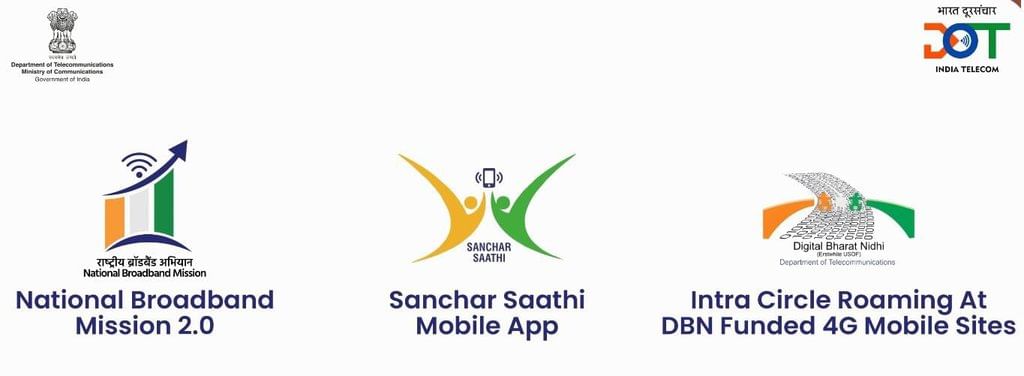 Why in News?
Why in News?The Union Minister of Communications has recently launched a new suite of initiatives aimed at enhancing citizen engagement and security in telecommunications, notably the Sanchar Saathi Mobile App and the National Broadband Mission (NBM) 2.0.
- The Sanchar Saathi Mobile App is designed to strengthen telecom security and empower citizens.
- NBM 2.0 aims to accelerate India's digital transformation by improving broadband connectivity.
Additional Details
- New Sanchar Saathi Mobile App:This user-friendly platform equips citizens with essential tools to secure their telecom resources and combat fraud. Key features include:
- Chakshu: Users can report suspected fraudulent communications (calls and SMS) directly from their mobile phone logs.
- Know Mobile Connections in Your Name: Citizens can identify and manage all mobile connections under their name, ensuring no unauthorized usage.
- Blocking Lost/Stolen Mobile Handset: Users can swiftly block and recover lost or stolen devices.
- Know Mobile Handset Genuineness: The app provides an easy method to verify the authenticity of mobile handsets, helping users to avoid counterfeit devices.
- National Broadband Mission (NBM) 2.0:Building upon the success of NBM 1.0, this initiative is integral to the National Digital Communications Policy, 2018, with major goals including:
- Extending operational optical fiber cable (OFC) connectivity to 2.70 lakh villages by 2030 with 95% uptime, significantly increasing from approximately 50,000 villages currently connected.
- Providing broadband connectivity to 90% of anchor institutions, such as schools and healthcare centers, by 2030.
- Achieving 100% mapping of government-owned fiber networks by 2026 for effective planning and execution of additional projects.
- Reducing the average disposal time for Right of Way applications from 60 days to 30 days by 2030, improving the ease of doing business.
- Enhancing the usage of the 'Call Before u Dig' (CBuD) mobile app to protect underground telecom infrastructure.
- Collaborating with various stakeholders to ensure effective implementation of the New RoW Rules 2024.
These initiatives represent a significant step towards improving telecom security and expanding broadband access across India, ultimately fostering a more digitally inclusive society.
GS3/Science and Technology
Third Launchpad at Satish Dhawan Space Center
Source: Business Standard
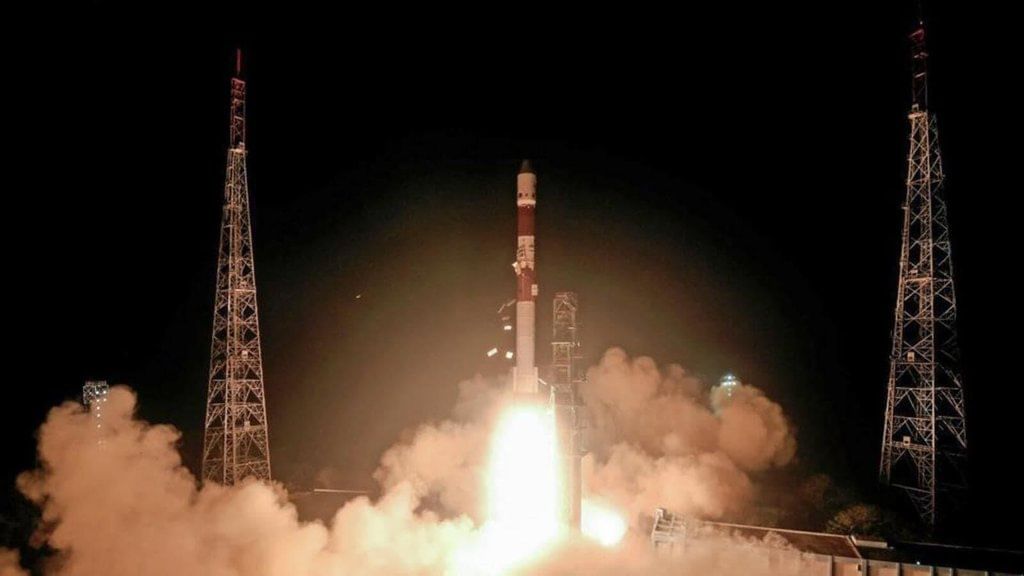 Why in News?
Why in News?The Union Cabinet has approved the establishment of a third launchpad at the Satish Dhawan Space Centre (SDSC) located in Sriharikota, Andhra Pradesh. This development is aimed at supporting ISRO's future operations involving the heavier Next Generation Launch Vehicle (NGLV).
- The SDSC is India's sole spaceport, which became operational in 1971 with the launch of the 'Rohini-125' rocket.
- In 2002, the center was renamed to honor Satish Dhawan, a pivotal figure in Indian space science.
Additional Details
- Satish Dhawan: An eminent rocket scientist, Dhawan is recognized as the 'Father of Experimental Fluid Dynamics research' in India. He made groundbreaking contributions to the study of turbulence and boundary layers.
- Leadership at ISRO:Dhawan took over as Chairman of ISRO in 1972, succeeding Vikram Sarabhai. Under his guidance, significant advancements were made in India's space capabilities, including:
- INSAT: A telecommunications satellite.
- IRS: The Indian Remote Sensing satellite.
- PSLV: A launch vehicle that marked India's entry into spacefaring nations.
- Legacy and Recognition: After Dhawan's death in 2002, the space center was renamed in his honor due to his transformative contributions to the field.
GS2/Governance
Central Suspect Registry (CSR)
Source: Indian Express
Why in News?
The Central Suspect Registry (CSR) has made headlines for its significant impact in combating cybercrime. In just three months since its inception, the CSR has successfully prevented over 600,000 fraudulent transactions, resulting in a savings of ₹1,800 crore, as reported by the Ministry of Home Affairs (MHA).
- The CSR is designed to enhance fraud risk management through a comprehensive registry of cybercrime suspects.
- It contains information on approximately 1.4 million individuals linked to financial fraud and other cybercrimes.
Additional Details
- Establishment: The CSR was developed by the Indian Cyber Crime Coordination Centre (I4C) under the Ministry of Home Affairs, aiming to consolidate cybercrime-related data.
- Accessibility: The registry is available to states, Union Territories, central investigation agencies, intelligence agencies, and financial institutions to aid in fraud detection.
- Integration with NCRP: The CSR utilizes data from the National Cybercrime Reporting Portal (NCRP) to pinpoint potential cybercriminals.
- Support from Financial Entities: The Reserve Bank of India (RBI) has mandated all banks to incorporate the CSR into their systems to enhance fraud prevention.
- Impact: As of December 1, 2024, the CSR has blocked over 610,000 fraudulent transactions, frozen 867,000 mule accounts, and blocked 700,000 SIM cards and 140,000 mobile devices, saving ₹3,850 crore in financial fraud transactions since 2021.
- Additionally, 103,151 suspicious online content items have been blocked under the Information Technology Act, 2000.
The establishment of the Central Suspect Registry represents a significant step forward in India's fight against cybercrime, enhancing the ability of financial institutions and law enforcement agencies to work together in identifying and preventing fraudulent activities.
GS2/International Relations
Abd-al-Kuri Island: Geographic and Strategic Importance
Source: Economic Times
Why in News?
Recent satellite imagery has uncovered a nearly finished airstrip on Yemen's Abd al-Kuri Island, likely constructed by the UAE. This development raises questions regarding the geopolitical dynamics in the region.
- Abd-al-Kuri Island is situated approximately 65 miles southwest of Socotra in the Indian Ocean.
- The island is part of the Socotra Archipelago and belongs to Yemen, despite being geographically closer to the Horn of Africa.
- It features a rocky terrain, with the highest point reaching over 700 meters at Mount Jebel Saleh.
Additional Details
- Geographical Location: Abd-al-Kuri Island is about 110 km east-northeast of Cape Gwardafuy (Guardafui), Somalia, positioning it strategically between Yemen and the Horn of Africa.
- Population and Economy: The island is sparsely populated, with fewer than 500 residents primarily engaged in fishing. Small settlements are scattered across the island.
- Unique Flora: One notable feature of Abd-al-Kuri is the endemic plant, Euphorbia abdalkuri, which is characterized by its toxic and caustic sap.
This airstrip and the island’s strategic position underscore the complex interplay of interests in the region, particularly amidst ongoing tensions involving Houthi rebel forces.
GS2/International Relations
Impact of Proposed US Sanctions on Russian Oil and India’s Energy Landscape
Source: Business Standard
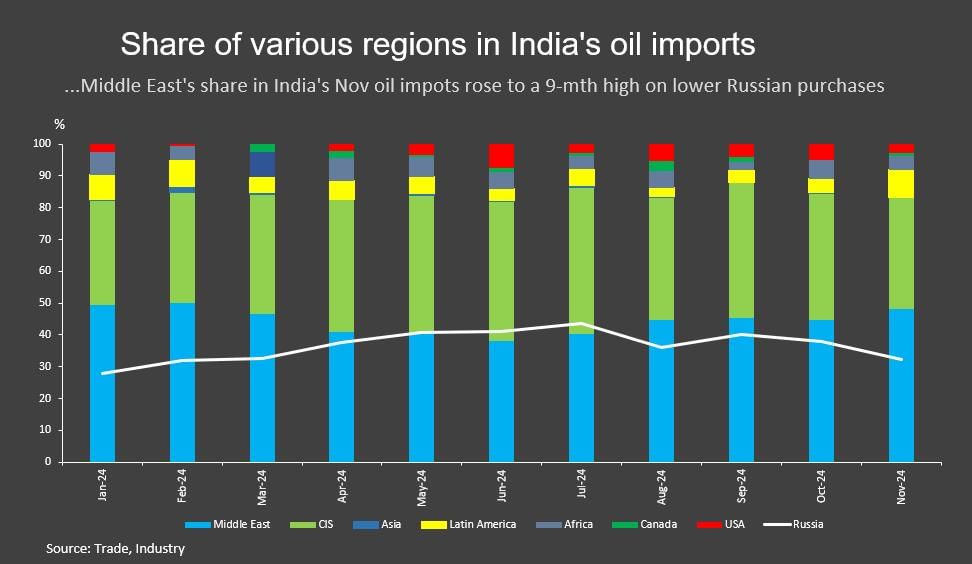 Why in News?
Why in News?Scott Bessent, who has been nominated by President-elect Donald Trump for Treasury Secretary, discussed plans to enhance sanctions on Russia's oil sector during his Senate confirmation hearing. His statements emphasize the incoming administration's strategic approach to address the Ukraine conflict and its broader implications, particularly its effects on global oil prices and India's energy trade.
- New sanctions imposed by the Biden administration targeting Russian oil trade.
- India's growing dependence on Russian oil amidst the evolving geopolitical landscape.
- Challenges for India in settling oil trades in rupees due to tighter sanctions.
Additional Details
- New Sanctions on Russian Oil: The Biden administration has implemented new sanctions as of January 10, aimed at reducing Russia's oil trade. The prospective Trump administration may enforce these sanctions more rigorously, focusing on major Russian oil companies.
- Scope of Sanctions: Key targets include Russian oil producers like Gazprom Neft and Surgutneftegas, as well as 183 tankers linked to Russia’s “shadow fleet.” Services from Russia-based oilfield providers are also impacted.
- Objective: The goal is to disrupt the revenue that supports Russia's military efforts. The US Office of Foreign Assets Control has set February 27 as the deadline for compliance regarding crude oil loaded before January 10.
- Impact on India: In 2023-24, bilateral trade between India and Russia reached $65.7 billion. Russia has emerged as India's largest crude oil supplier, accounting for nearly 38% of India's imports in 2024, significantly up from levels before the Ukraine war.
- India’s Response: Despite the sanctions, India is committed to energy security and has no immediate plans to cut oil purchases from Russia. Indian refiners are speeding up payments for Russian crude, processing transactions in Rubles to avoid US penalties.
- Challenges for Rupee Internationalisation: Efforts to conduct India-Russia oil trades in rupees face significant challenges due to the imposition of stricter sanctions. Meanwhile, Russia-China trade in non-dollar currencies has increased the yuan's global influence.
- US Stance: During his confirmation hearing, Bessent underscored the necessity of preserving the US dollar's status as the world’s reserve currency, amid previous threats from former President Trump regarding tariffs on BRICS nations if they pursued alternative currencies.
In conclusion, India’s proactive engagement with the US illustrates its dedication to maintaining energy security while adeptly navigating the complexities posed by international sanctions. As one of the foremost buyers of Russian oil, India continues to prioritize its economic and strategic interests in the face of shifting global dynamics.
GS3/Science and Technology
Hyperspectral Imaging Satellite
Source: Business Standard
Why in News?
Recently, India's space technology startup, Pixxel, successfully launched three of its six hyperspectral imaging satellites, part of the 'Firefly' constellation, aboard a SpaceX rocket from California. This marks a significant advancement in satellite technology for India.
- The hyperspectral imaging satellites can transmit data across hundreds of wavelengths, allowing them to identify issues not detectable by current satellite systems.
- The Firefly constellation provides global coverage with a revisit time of every 24 hours.
Additional Details
- Hyperspectral Imaging (HSI): This technique analyzes a broad spectrum of light rather than just the primary colors (red, green, blue), effectively creating a spectral fingerprint of the Earth. Each pixel in the captured image contains a complete spectrum, offering detailed information about the imaged area.
- Firefly Constellation: This is India's first commercial satellite constellation, featuring a resolution six times sharper than the standard 30-meter resolution of existing hyperspectral satellites, achieving an exceptional five-meter resolution. This capability enables the detection of intricate details that were previously invisible to conventional systems.
- The satellites are equipped with advanced sensors capable of capturing data across more than 150 spectral bands. This technology can detect subtle changes in chemical compositions, assess vegetation health, analyze water quality, and monitor atmospheric conditions.
The launch of these satellites represents a significant leap forward in India's capabilities in satellite imaging and data collection, paving the way for enhanced monitoring of the Earth's resources and environmental conditions.
GS2/Governance
UNICEF’s Global Outlook 2025: Strengthening the Foundations of Children’s Futures
Source: UNICEF
 Why in News?
Why in News?Recently, UNICEF’s Global Outlook 2025 highlights the urgent need for resilient systems to safeguard children’s rights in the face of crises such as conflict, climate change, and economic instability. The report emphasizes ensuring equitable access to essential services for children worldwide.
- Over 473 million children live in conflict-affected areas, facing severe risks.
- Approximately 400 million children are in debt-distressed countries, limiting essential services.
- About 1 billion children are at high risk from climate impacts, with minimal funding for child-focused climate initiatives.
- Digital divides persist, especially in low-income communities, despite advancements in digital infrastructure.
Additional Details
- Conflict and Displacement: Nearly 19% of children globally are affected by conflict, leading to risks such as displacement and psychological trauma.
- Economic Instability: Financial pressures in debt-distressed countries are reducing investments in education and healthcare for children.
- Climate Change: Extreme weather events disrupt children's access to education and healthcare, with only 2.4% of climate finance directed towards initiatives focused on children.
- Digital Inequality: Opportunities from digital public infrastructure are not equally accessible, adversely affecting marginalized children.
The Indian government has initiated several programs to address these challenges, including schemes like Beti Bachao Beti Padhao, Sukanya Samriddhi Yojana, and the Integrated Child Development Services. These programs aim to enhance the welfare and empowerment of children, particularly girls, and improve nutritional and health outcomes.
Steps Taken by the Indian Government
- Beti Bachao Beti Padhao (BBBP): Aims to improve the declining child sex ratio and promote girls' education.
- Sukanya Samriddhi Yojana (SSY): Encourages savings for daughters’ education and marriage.
- Integrated Child Development Services (ICDS): Focuses on the nutritional and health status of young children and mothers.
- National Nutrition Mission (POSHAN Abhiyaan): Aims to reduce malnutrition through various community-based approaches.
- Mission Vatsalya: Provides child protection services to vulnerable children.
- Child Protection Policies: Enacts laws like the POCSO and Juvenile Justice Acts to safeguard children's rights.
- National Commission for Protection of Child Rights (NCPCR): Promotes and protects children's rights through various initiatives.
Strengthening Global Governance and National Systems
- Global Governance: Develop specialized frameworks to protect children's rights in the digital environment.
- Ensuring Accountability: States and corporations should be held accountable for violations of children's rights.
- Fostering Global Collaboration: Promote cooperation to address challenges like cyberbullying through shared practices.
- National Systems: Establish frameworks that integrate children's rights into laws and policies.
- Strengthening Civil Society Organizations (CSOs): Enhance their capacity to advocate for child rights initiatives.
- Empowering Children’s Participation: Encourage children's involvement in decision-making processes.
Ultimately, a collaborative approach between global frameworks and national systems is essential to prioritize children's rights and well-being. This integrated strategy should focus on accountability, digital safety, and climate resilience.
Way Forward
- Integrated Global-National Synergy: Strengthen collaboration to prioritize children's rights in governance.
- Child-Centric Policy and Participation: Develop evidence-based policies empowering children to participate in decision-making.
This comprehensive approach will ensure a more responsive and effective governance structure that addresses the vulnerabilities faced by children today.
Mains PYQ:
The Right of Children to Free and Compulsory Education Act, 2009 remains inadequate in promoting an incentive-based system for children’s education without generating awareness about the importance of schooling. Analyse.
GS3/Environment
What is Hydroclimate Whiplash?
Source: DTE
Why in News?
Recently, Los Angeles has been facing devastating wildfires, which have been significantly fueled by a rare meteorological phenomenon known as hydroclimate whiplash.
- Definition: Hydroclimate whiplash refers to rapid and extreme shifts between periods of intensely wet weather and dangerously dry conditions.
- Global Trend: There has been a 31% to 66% increase in hydroclimate whiplash events worldwide since the mid-20th century, primarily attributed to climate change.
Characteristics
- Alternates between heavy rainfall and severe drought.
- Typically results in amplified weather extremes, such as floods followed by wildfires.
Causes of Hydroclimate Whiplash
- Rising Global Temperatures: Higher temperatures lead to intensified hydrological extremes, causing prolonged periods of both wet and dry conditions.
- Moisture Retention: Warmer air can hold more moisture, resulting in heavier rainfall during wet periods and exacerbating droughts during dry phases.
- ENSO Cycles: Shifts in the El Nino-Southern Oscillation influence precipitation and temperature extremes.
- Disruptions in Weather Patterns: Changes in ocean currents and wind patterns disrupt normal weather cycles, contributing to hydroclimate variability.
- Seasonal Delays: Unusual delays in wet or dry seasons can magnify hydroclimate swings, particularly evident in regions like California.
How Did This Phenomenon Cause Wildfires in LA?
In the 2024-25 season, the usual wet season that begins in October failed, which intensified dry conditions and heightened fire hazards. As dry air moves from high-pressure regions over southwestern deserts to low-pressure zones off the California coast, it warms and dries further, creating optimal conditions for wildfires.
Impacts of Hydroclimate Whiplash
- Wet periods foster vegetation growth, which later becomes fuel for wildfires during dry periods, increasing wildfire risks.
- Intense rainfall during wet periods can lead to flash floods and soil erosion, causing damage to ecosystems and infrastructure.
- Crops suffer from alternating floods and droughts, leading to reduced yields and heightened food insecurity.
- Infrastructure such as roads, dams, and buildings may face significant damage from floods, resulting in high repair costs.
- Floods can contribute to the spread of waterborne diseases, while droughts increase the risk of heat-related illnesses.
Previous Year Question (PYQ)
2011: La Nina is suspected to have caused recent floods in Australia. How is La Nina different from El Nino?
- 1. La Nina is characterized by unusually cold ocean temperatures in the equatorial Indian Ocean, whereas El Nino is characterized by unusually warm ocean temperatures in the equatorial Pacific Ocean.
- 2. El Nino adversely affects the southwest monsoon of India, while La Nina has no effect on monsoon climate.
Which of the statements given above is/are correct?
- (a) 1 only
- (b) 2 only
- (c) Both 1 and 2
- (d) Neither 1 nor 2
In summary, understanding hydroclimate whiplash is crucial for preparing and responding to its impacts, particularly in regions prone to extreme weather events.
|
38 videos|5244 docs|1106 tests
|
FAQs on UPSC Daily Current Affairs: 18th January 2025 - Current Affairs & Hindu Analysis: Daily, Weekly & Monthly
| 1. What is the Fast Track Immigration Trusted Traveller Program (FTI-TTP) and how does it benefit travelers? |  |
| 2. What are the key features of the New Sanchar Saathi Mobile App and how does it support the National Broadband Mission (NBM) 2.0? |  |
| 3. What is the significance of the Musi River and its impact on the surrounding regions? |  |
| 4. How does the Central Suspect Registry (CSR) function and what are its goals? |  |
| 5. What are the implications of proposed US sanctions on Russian oil for India’s energy landscape? |  |
















